One step forward, two steps back. In what has to be a disappointing development for fisheries managers in Yellowstone National Park, non-native brook trout are once again swimming the waters of Soda Butte Creek.
The National Park Service declared the stream, a tributary of the Lamar River, free of the invasive char in 2016, after years of exhaustive removal efforts. Brook trout pose a competitive threat to native Yellowstone cutthroat trout, and their presence in Soda Butte Creek is particularly alarming because of the stream's immediate connection to the Lamar River, which is home to one of the last intact big-water populations of native cutthroats.
Brookies are common in the West, but they are native to Appalachia and eastern Canada. All over the Rockies, brook trout have displaced native cutthroat trout, and they are proving to be stubborn invaders that are difficult to eradicate.
In Soda Butte Creek, which starts east of the park's boundary in Montana, brookies have been targeted for removal for the better part of two decades, as part of the NPS plan to restore native trout to its waters whenever and wherever it's practical. For instance, the Park Service is working to restore native fish in smaller, headwater streams, like the extreme upper reaches of the Gibbon River. It is not, however, looking to eradicate non-native brown and rainbow trout from the Firehole or Madison rivers, where the naturalized fish are cherished by park anglers.
As a result of the discovery in Soda Butte Creek, the Park Service, in cooperation with the Custer National Forest and Montana Fish, Wildlife & Parks, will close the stream from the park's northwestern boundary to Ice Box Canyon to public access and fishing from Aug. 14-18. During that time, fisheries professionals will apply the EPA-approved piscicide rotenone to the creek to kill all the fish in the stream.
Without this urgent action, the National Park Service says “brook trout will quickly displace native Yellowstone cutthroat trout and eventually invade the entire Lamar River watershed, threatening the largest remaining riverine population of Yellowstone cutthroat trout in existence.”
Prior to the treatment, fish techs will remove as many native cutthroat trout from the streams they can and relocate them to upstream tributaries of the Soda Butte that are not targeted for treatment. Techs will use electrofishing equipment to stun and net the fish before they are relocated.
"Cutthroat trout are the only trout species native to the park. They are the most ecologically important fish of the Greater Yellowstone Ecosystem and are highly regarded by anglers," a National Park Service statement on the removal effort reads. "Genetically pure Yellowstone cutthroat trout populations have declined throughout their natural range in the Intermountain West, succumbing to competition with and predation by nonnative fish species, a loss of genetic integrity through hybridization, habitat degradation and predation."
In addition to Yellowstone cutthroat trout, the park is also home to a native population of westslope cutthroat trout and a restored population of Arctic grayling. Both of these fish are found in the northwest corner of the park. The southwest corner of Yellowstone is home to native Snake River fine-spotted cutthroat trout.
The NPS has worked for 20 years to restore native Yellowstone cutthroat trout in the Yellowstone Lake drainage, where invasive lake trout were discovered in 1994. That effort is proving to be successful, as spawning cutthroats are returning to the watershed. That said, the effort, which involves gillnetting and targeting lake trout on their fall spawning beds, will be a persistent project that will likely always require attention.




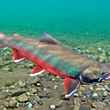
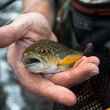

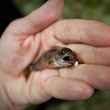
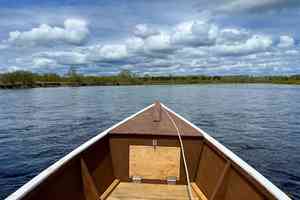


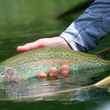

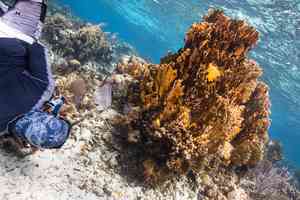


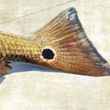





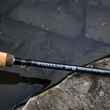



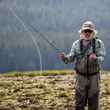

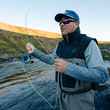


Comments
David Rogers replied on Permalink
This is stupid and a waste of time and resources. The reason it didn't work the last time is because the fish above the poisoned area in the park migrated downstream. The brookies are in the the system including the headwaters, so to be successful the entire system will need to be poisoned. They are not planning on doing this as they are removing cutthroats from the area intended for the "treatment" and moving them to the headwaters. I guess once they are relocated up there, they can hang out with the brookies and wait to swim back downstream.
Glenn Dotter replied on Permalink
You are right. The other isse is the poison must be used BEFORE they spawn as the poison doesnt kill eggs. So if they mis just one or two early spawners, the whole effort is a bust. The park service biologist told me that at Sand Lake.. When I asked why they didnt just stock them without killing the others, he said they tried that some years before but they inbred and thry didnt get a pure strain.
Jim Brandau replied on Permalink
The entire Soda Butte Creek from its headwaters and tributaries (MT, WY) down to Ice Box Canyon were poisoned with rotenone in August 2015 & 2016.
Glenn Dotter replied on Permalink
So that was a waste of time and taxpayer dollars and now they want to do it again.It will only take 1 or 2 mating pairs to spawn before they poison it again and i a couple years they will say we have to do it again.
Jim Brandau replied on Permalink
Yep. Sadly this is their zero-tolerance policy. The electroshocking was working by suppressing the brookies and they touted that as successful. Then all of a sudden it's "the brookies are ready to invade the Lamar". The brookies were not ready to invade the Lamar; the data shows that. It was a shift in policy, not more brookies.
Doug replied on Permalink
Leave those Brookies alone ! For Pete's sake , it's not like they are Snakeheads,or some such .
Glenn Dotter replied on Permalink
Maybe we should do the same thing with the "ivasive species at our southern border! They did the samething to the Sand Lakes here in Colorado. Killed off a spectacular fishery of Snake river Cutts thath were there for 50 years to pit Rio Grande Cutts in. The Park service guy said he even couldnt tell the difference but the Snake River Cutts "didnt belong there". So they wiped out a fishery that produced up to 5 lb. Cutss 20-25 "long.
So now in Yellowstone the Brook Trout returned to where they were not wanted. Keep screwing with Mother Nature and watch what happens.
Nayashewon replied on Permalink
So Brook Trout are considered "invasive", but Brown Trout are considered "naturalized"? That is the epitome of convoluted thinking.
Glenn Dotter replied on Permalink
What is wrong with Brookies? You are right Brows eat rainbows. Arent rainbows invasive too? I guess the biologists need to justfy their jobs. They have raised and stocked so much they dont know whatelse to do
Pa flyguy replied on Permalink
If only that would happen here in the East with our streams. Ohh no the brookies have returned to Pennsylvania streams! lol
Gorka Sancho replied on Permalink
Please undersand that Yellowstone National park is really trying to restore species, and one of their most iconic species is the yellowstone cutthroat, already threatened by the illegal introduction of lake trout in Yellowstone Lake. Yes in the 20th century the own NPS introduced other salmonid fishes for recreational fishing, but they are now trying to ammend past errors. Nothing more sad to see Wyoming high country mountain creeks invaded by miniature introduced brook trout which outcompete the native cutthroats. If the NPS does nos do anything, the whole Lamar River drainage (known for its large Yellowstone cutties) will become overrun by brook trout. best to leave brookies in the Appalachians, protect the cutties in the Rockies.
Glenn Dotter replied on Permalink
Understand what you are saying. Irregardless of what they did in the 20th century. What give the NPS or any other government agency for that matter, or man in general, the right to say one species doesnt belong and wipe it out to put another species that they say does where the other one was? You could say the same for Brown trout and Rainbows. Just put the cutties in and encourage the taking of brookies while protecting the cutties.
Pages